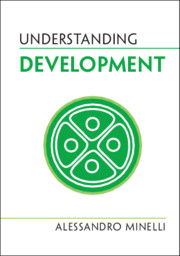Book contents
- Understanding Development
- Series page
- Understanding Development
- Copyright page
- Reviews
- Dedication
- Contents
- Foreword
- Preface
- Acknowledgements
- 1 Defining Development, if Possible
- 2 Cells and Development
- 3 Development as the History of the Individual
- 4 Revisiting the Embryo
- 5 Developmental Sequences: Sustainability versus Adaptation
- 6 Genes and Development
- 7 Emerging Form
- 8 The Ecology of Development
- Concluding Remarks
- Summary of Common Misunderstandings
- Classification
- References and Further Reading
- Index
2 - Cells and Development
Published online by Cambridge University Press: 29 April 2021
- Understanding Development
- Series page
- Understanding Development
- Copyright page
- Reviews
- Dedication
- Contents
- Foreword
- Preface
- Acknowledgements
- 1 Defining Development, if Possible
- 2 Cells and Development
- 3 Development as the History of the Individual
- 4 Revisiting the Embryo
- 5 Developmental Sequences: Sustainability versus Adaptation
- 6 Genes and Development
- 7 Emerging Form
- 8 The Ecology of Development
- Concluding Remarks
- Summary of Common Misunderstandings
- Classification
- References and Further Reading
- Index
Summary
A bias deriving from developmental biology’s roots in descriptive embryology suggests that development is restricted to multicellular organisms, but in fact remarkable developmental processes are found among unicells, e.g. trypanosomes and ciliates. Spermatogenesis and oogenesis, the processes by which sperm cells and eggs are produced, also deserve to be regarded as segments of development. In the giant unicellular green alga Acetabularia, conspicuous morphogenesis may occur even in a cell from which the nucleus has been removed months before. In some organisms (examples exist in animals, plants and other organisms), more or less extended phases of development occur in syncytia, i.e. in systems where multiple nuclei are included in an undivided mass of cytoplasm. In plants, cells are permanently connected through thin cytoplasmic threads, the plasmodesmata. In multicellular systems, the relationship between cellular-level processes (e.g., mitosis) and overall developmental effects varies and cannot be simply summarized in terms of ‘cell sociology’. Programmed cell death also contributes to several morphogenetic processes.
- Type
- Chapter
- Information
- Understanding Development , pp. 19 - 35Publisher: Cambridge University PressPrint publication year: 2021



